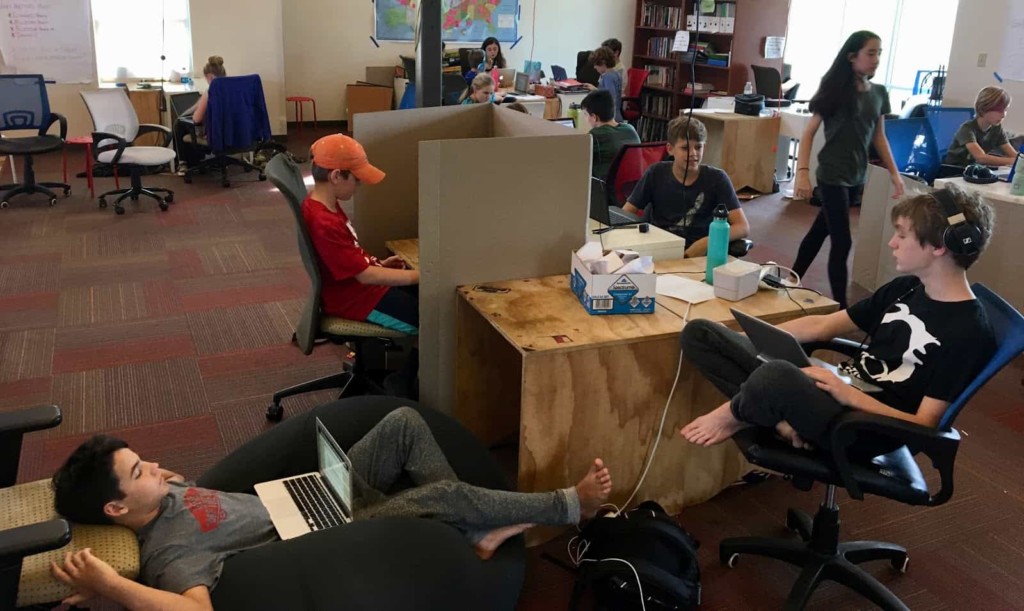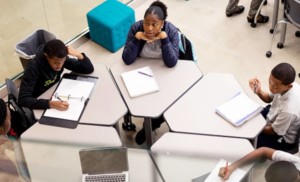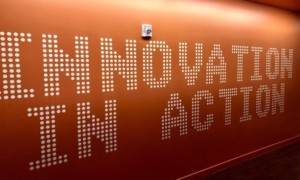Hard Reset: What Will Be New Post Pandemic

Hard Reset: 10 Post Pandemic Changes
It seemed like we were experiencing a lot of change with the climate crisis, the innovation economy, and trade wars—then comes a pandemic. As the emergency brake was pulled on the economy last week, almost everything shut down. Many were laid off, others are trying to figure out how to work from home. The disruption is establishing new baselines in work, learning, healthcare, and governance. In fact, it’s a hard reset on everything.
10 things that will be new and different post-pandemic:
Big class of 2040: there will be a spike in birth rates early in 2021 resulting in a couple big cohorts moving through school.
More remote work: after adapting to remote work, many companies will continue to support more work from home. A growing number of companies will reduce their leased space or go completely virtual. Prices of expensive urban commercial real estate will quickly soften and developers will hit the brakes on new construction.
More personalized competency-based learning: states have begun to issue guidance to high schools and it basically says, ‘figure it out’—find learning options for kids, make judgments about competency, and waive what you can. Post-pandemic, a lot more high schools will have more flexible, ‘show what you know’ options.
And that goes for teachers, too! There will be less of the sit-and-get professional development and more flexible, personalized professional learning for teachers.
More community connected project-based learning: with state testing cancelled and a lot more flexible time, many learners are engaging in interest-based learning and impromptu projects. School closures have been a reminder that learning can happen anywhere. When kids return to school, some schools will respond with more project-based learning connected to local problems and opportunities.
A new frame of meaningful measures: We can officially call this the official end of the 30-year era of standards-based reform and the associated preoccupation with grade-level reading and math proficiency as the only measure of progress for learners and quality for schools.
Pre-pandemic, there was growing consensus about the importance of success skills (e.g., self and social awareness, collaboration, resilience, growth mindset) and that has only increased in the last month.
There will be a resumption of state tests at some point, but it will be in the context of broader goals and new forms of evidence. Schools will help learners build a comprehensive profile and assemble an extended transcript that reflects their personal learning journey.
More home-based and hybrid learning: After parents figure out learning at home, half a million students won’t go back to school. And a bunch of school districts will get more aggressive about supporting homeschoolers with hybrid learning centers like Workspace Education in Bethel, Connecticut, and Da Vinci Connect near Los Angeles International Airport.
Hundreds of parents will turn their homeschool into a microschool. Networks like Acton Academy and Prenda Schools will continue their explosive growth.
Fewer expensive schools and colleges: Dozens of private colleges and schools will never reopen after learners and parents scrambled to find less expensive flexible alternatives.
Continuity of learning: By the 2020-21 school year, the learning institutions will have a continuity of learning plan with a blended curriculum, learning platform, personal or take-home devices, and support for ubiquitous wi-fi. No more snow days!
Post-pandemic, more people will think of education as a public service more than a place.
Better safety net: millions of Americans suddenly out of work is forcing U.S. Congress and state legislatures to quickly improve social safety nets. This will not only address short term challenges but improve long term ability to weather dislocation; we’re in for a long, bumpy ride.
New mutuality: perhaps the most foundational change will be a recognition of our new mutuality—we’re all in this together. We think that will translate into difference-making: more schools focusing on helping young people find and begin making their unique contribution.
We’re experiencing a terrible shock—one that will get worse before it gets better, but some good will come from it if we work together.
For more, see:
- The New Mutuality
- Coronavirus Offers Teachable Moments and Wakeup Call for All Schools
- When the School Doors Close: Tips for Families To Help Students Continue Learning When Disaster Strikes
Stay in-the-know with innovations in learning by signing up for the weekly Smart Update.
This post was originally published on Forbes.





Brian Schwer
I feel society now realizes how important our educators are and how much they are needed. My hope is that we start to value educators more by increasing salaries across the country and growing respect for the craft and profession begins to return. Teacher unions should gain a confidence and a stance that allows them to negotiate for livable wages and benefits in order for teachers to survive and promote the field as essential in our society.